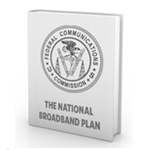 The Senate Commerce Committee held a hearing yesterday on Universal Service Fund (USF) reform. It’s a hot topic. As the FCC looks to implement the national broadband plan, USF reform is front and center. There is considerable debate on how to transition the $7 billion fund from supporting universal availability of dial tone to universal broadband.
The Senate Commerce Committee held a hearing yesterday on Universal Service Fund (USF) reform. It’s a hot topic. As the FCC looks to implement the national broadband plan, USF reform is front and center. There is considerable debate on how to transition the $7 billion fund from supporting universal availability of dial tone to universal broadband.
Much of the discussion during the committee meeting centered around the debate of Title II regulation for broadband and the impact that would have on USF reform. But Windstream CEO Jeff Gardner made some interesting points in his testimony.
There’s been much talk about the digital divide between rural and urban America – a divide that many argue will be exacerbated by the national broadband plan, which sets broadband speed targets of 4 Mb/s for services supported by the new Connect America Fund (CAF), and implied targets of 100 Mb/s for urban areas under the so called ‘100 squared’ initiative. On the surface, one could draw a conclusion of a pending and significant broadband digital divide, where urban America enjoys speeds of 100 Mb/s and rural America inches along at 4 Mb/s..
But as Gardner points out, a rural-rural broadband digital divide already exists, where vast differences in broadband availability exist in rural territories. “We have heard about the fear that reform might create a rural urban divide, but the National Broadband Plan has recognized that the current rules have already created a rural-rural divide,” said Gardner. He is correct.
Within the context of broadband, there are two rural Americas. Generally speaking, rural Americans served by small rural local telephone companies and/or co-ops tend to have very good access to broadband services (whether they actually subscribe to it is a different story). Rural Americans served by large tier one and tier two carriers like Qwest and Verizon may not be so lucky. As Gardner points out, “About two thirds of all housing units without broadband are located in the service territory of larger [companies like] Windstream, Frontier, CenturyLink, Qwest, and AT&T.”
It’s an important distinction because our current telecom policy has basically created a broadband digital divide in rural America, never mind the urban-rural divide. As policy makers craft the next generation of broadband policy they should keep this in mind. Does the national broadband plan and the CAF address this issue, or exacerbate it?


